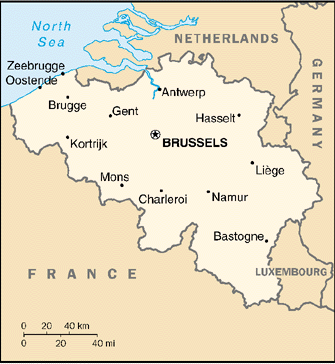| Description Quiz | True or False Quiz | Multiple choice Quiz |

〜Reading Passage〜
The fortunes of Bruges rose and fell with the strength of the Zwin, the river on which the city is built. Although there is evidence that the area was inhabited as far back as Neolithic times, the beginning of Bruges' history, as a pre-eminent commercial and cultural center, is marked by the great Dunkerque Floods of the twelfth century. The wash of the flood waters made the Zwin into an ideal trade river, and Bruges soon prospered. Between the 13th and 15th centuries, the city became one of the richest in the world, its trade supplemented by fine cloth manufacturers and excellent banking services. Its population soared, its port welcomed ships from all over the world, its artisans produced tapestries, sculpture, paintings and lace of unparalleled splendor, and its wealthy citizens patronized the finest artists of the age. By the middle of the 16th century, all this had changed. The Zwin had begun to silt up, discouraging the passage of commercial shipping. Trade routes shifted and the cloth industry declined. Bruges experienced the revolution period from 1789 to 1830 in a passive way. The first industrial revolution hardly disturbed the city. Around 1850 Bruges was the poorest city in the country. The middle classes spoke French, the illiterate people only knew their local dialect. French was decreed to be the official language for public life in 1885. But Guido Gezelle (1830-1899), the most important Dutch speaking poet of the nineteenth century, was a native of Bruges. In European literature Bruges was made famous by the French language novel "Bruges la Morte" by Georges Rodenbach (1892). The book describes Bruges as a sleeping, dead, but mysterious city. At its city center, Bruges remains a medieval city of stunning beauty and charm. It is rich in architectural and artistic treasures, graced by quiet canals and waterways and a favorite to visitors. The Belfry (13th and 15th century) at the old city center is widely considered Belgium's finest, with a carillon that has rung every quarter hour for nearly seven and a half centuries. Undoubtedly the most enjoyable way to visit Bruges is to amble along its cobbled streets, glide by boat along its tranquil canals and discover a city that time has forgotten. And do not forget about original foods you can eat in Bruges. For example the regional dishes (fish and mussels), the beer (Straffe hendrink )and the cakes and chocolates from Bruges. As of December 2000 the whole historic center of Bruges has been added to the list of UNESCO World Heritage Sites.
Words
Zwin 「干潮時に海水が取り残されて洲の間できる水路」を意する。
Neolithic
新石器時代
Dunkerque
フランスのドーヴァー海峡に臨む小さな港町。
Tapestries
つづれ織り
Guido Gezelle
ギドー・ゲゼル、ブリュージュの最も有名な詩人。 ブリュージュにゲゼル博物館も存在する。
Bruges la Morte
「死都ブリュージュ」、ギドーゲゼルの作品
Mussels
ムール貝
Straffe hendrink
ブリュージュ市内にある2つのうちの1つの醸造所のビール
WEB SITE
World Heritage
ベルギー観光局(日本語)
Tourist
sights in Bruges(in English)
www.shejapan.com > World Heritages > Historic Centre of Brugge
by Azusa Yonetsu, Aoyama Gakuin College of Economics
